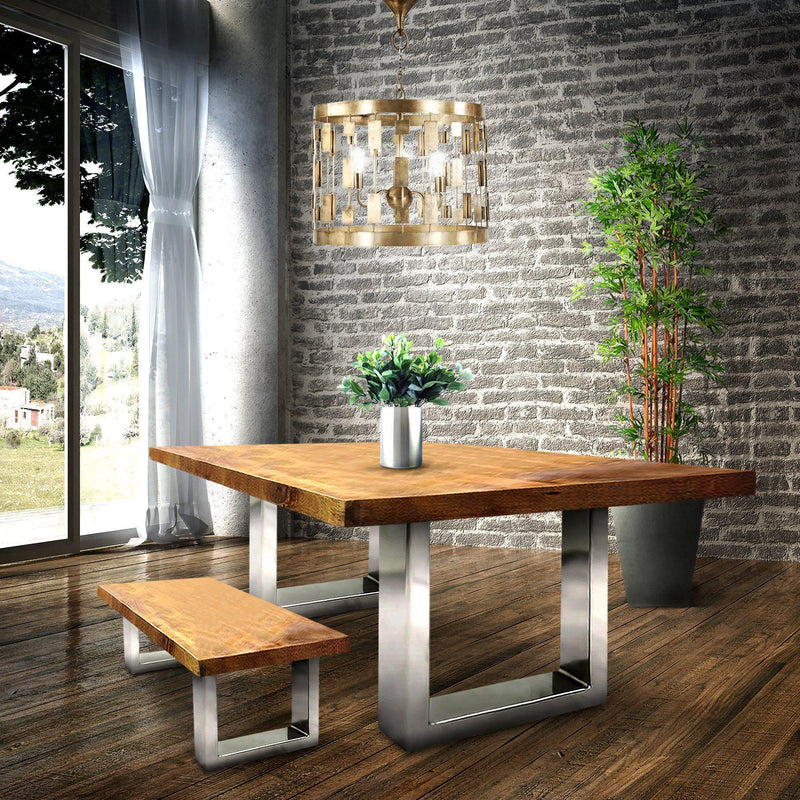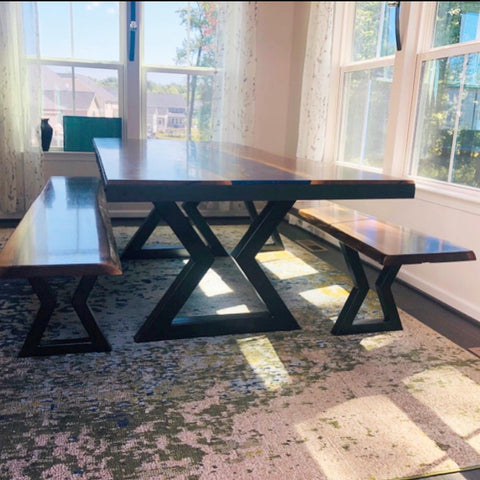How the Right Dining Room Table Legs Can Complete Your Dining Room Look
How the Right Dining Room Table Legs Can Complete Your Dining Room Look
Blog Article
From Standard to Modern: Locate the Suitable Dining-room Table Legs for Your Style
The option of eating space table legs plays an essential role in specifying the general character of your room, connecting the gap in between conventional workmanship and contemporary aesthetic appeals. While classic layouts such as cabriole and turned legs evoke a feeling of timeless refinement, contemporary designs like hairpin and geometric alternatives provide an opportunity for striking aesthetic interest. Examining the best equilibrium between these designs requires a nuanced understanding of your existing decor and personal preference. As you consider these components, the question stays: just how can you perfectly incorporate these diverse leg designs to create a harmonious eating experience?
Comprehending Table Leg Styles
The selection of eating space table leg designs can substantially affect both the aesthetics and performance of the space. Each leg design adds one-of-a-kind aesthetic components and sensible attributes, satisfying diverse style choices and use demands. Recognizing these styles is essential for picking the ideal table that straightens with your total interior style vision.
As an example, conical legs offer a tidy, timeless appearance that can improve a space's beauty, while stand bases give security and make best use of legroom, making them ideal for smaller sized areas. Hairpin legs, a characteristic of mid-century contemporary design, present a commercial flair, enabling a ventilated, open feel. In a similar way, trestle legs evoke rustic charm, giving robust assistance and a sense of timelessness.
Additionally, the option of products plays a considerable duty. Wood legs can bring warmth and structure, whereas steel choices commonly share a streamlined, contemporary vibe. Ultimately, comprehending table leg styles is essential for producing a cohesive dining location that mirrors personal style while making certain practicality and comfort. By attentively considering these components, you can enhance both the aesthetic and functional appeal of your dining area.
Typical Table Leg Options
When picking dining room table legs, traditional options usually embody classic sophistication and craftsmanship. These styles reflect a rich heritage and a commitment to high quality, making them ideal for those who value traditional appearances.
One of one of the most legendary traditional leg styles is the cabriole leg, identified by its stylish bent shape. This style frequently includes decorative carvings and is most commonly found in Queen Anne and Chippendale furniture. Another popular option is the turned leg, which boasts a collection of smooth, rounded forms that give a timeless appearance while keeping security.
Moreover, the straight leg, while basic, uses a basic and durable framework that can blend seamlessly with a range of tabletop styles. For those attracted to ornate describing, claw-and-ball feet legs stimulate a sense of grandeur and can work as a spectacular prime focus in any kind of eating area.
Finally, pedestal bases, although not purely legs, offer an alternative traditional alternative that enables ample legroom and can be perfectly sculpted. Each of these conventional leg styles adds to the general ambiance of an eating room, weding feature with aesthetic allure.

Modern Table Leg Styles
Modern table leg designs use a diverse series of styles that stress clean lines and cutting-edge materials. These layouts typically focus on performance while working as striking focal points within an eating space. Minimal visual appeals are widespread, with legs crafted from materials such as steel, glass, and crafted wood, which add to a modern and airy feel.
One preferred design is the hairpin leg, identified by its slender, conical structure that supplies security without overwhelming the table top (dining room table legs). This design is commonly discovered in mid-century modern-day furniture and can effortlessly match different dining table shapes. An additional pattern is using geometric shapes, where legs might tackle unbalanced or angular types, including visual interest and a touch of creativity

Blending Styles for Unique Spaces
Often, homeowners look for to develop special dining spaces that reflect their personal design by mixing different design aspects. This approach enables the consolidation of diverse visual appeals, causing a harmonious yet distinctive setting. Combining a rustic wooden table with smooth, modern steel legs can produce an eye-catching contrast that boosts the area's total appeal.
In addition, integrating vintage table legs with contemporary table tops can evoke a feeling of history while keeping a modern perceptiveness. Such combinations not just showcase specific taste yet also urge imagination, permitting house owners to curate a space that feels both individual and welcoming.
Shade plays a critical function in this mixing process; picking table legs that complement or comparison with the existing color pattern can boost visual rate of interest. For example, whitewashed legs can visit their website soften the daring of a dark table surface area, developing a well balanced visual.
Tips for Selecting the Right Legs
Picking the right table legs is vital for attaining both performance and aesthetic appeal in your dining room. Begin by considering the general design of your area. Traditional setups profit from legs that feature complex makings or transformed designs, while contemporary areas may require smooth, minimalist designs.
Following, evaluate the elevation and stability of the legs. dining room table legs. Basic dining tables vary in between 28 to 30 inches in height, so ensure the legs match this dimension for convenience. Furthermore, durable products, such as hardwood or steel, can improve security and durability
Examine the leg shape as well-- choices include right, tapered, or stand layouts. Straight legs offer a timeless look, while tapered legs can include a touch of beauty. Pedestal bases supply sufficient legroom and are optimal for smaller areas.
Verdict
In recap, selecting the perfect dining-room table legs calls for cautious consideration of both contemporary and typical styles. Conventional choices such as cabriole and turned legs use ageless sophistication, while contemporary styles like hairpin and geometric click here to find out more shapes provide a modern touch. By integrating leg style, height, and product with the general design, a cohesive and welcoming atmosphere can be attained. Inevitably, the chosen table legs must mirror the wanted visual, improving the dining experience within the room.
The variety of dining area table leg styles can dramatically affect both the aesthetic appeals and functionality of the area. Ultimately, understanding table leg designs is important for producing a natural dining location that shows personal style while making sure functionality and comfort.One of the most renowned read this post here typical leg designs is the cabriole leg, identified by its elegant curved shape. Straight legs provide a timeless look, while tapered legs can add a touch of elegance.In recap, picking the optimal eating area table legs calls for careful consideration of both modern and typical styles.
Report this page